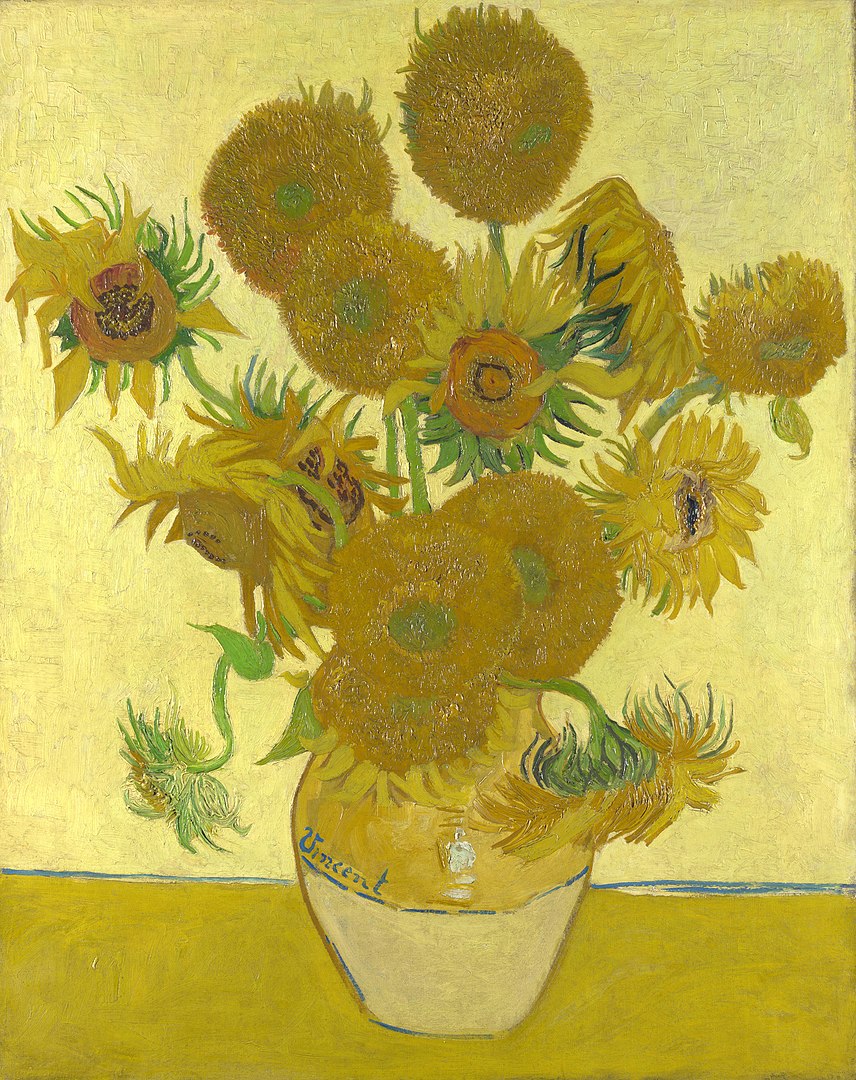This article was originally published on Medium.
On Friday, Oct. 14, two activists from the Just Stop Oil movement spilled two cans of soup on Van Gogh’s “Sunflowers,” one his most famous paintings. Since then, discussions have been polarized — and some of the strongest critics came from within the climate movement. Many people agree with the message (“It is essential to phase out of fossil fuels”) but thought that the action is inappropriate — or even worse: It could contribute to us losing.
The activists have been criticized for targeting art rather than coal, gas or oil infrastructure. Had they done so, they would have made a big mistake: Artistic creation participates in the enchantment of the world. We want more art, more creativity, more amazement.
Let’s begin with the easiest criticism: The painting was not damaged, and could not have been. It is protected by strong glass. The two activists of Just Stop Oil obviously knew this. They planned and prepared their action carefully and likely did a lot of scouting.
Their choice is nonetheless destabilizing. Van Gogh is in no way responsible for global warming, and the paintings he painted even less so. Moreover, the National Gallery has no decisive agency in the fight against global warming.
This action is designed to be destabilizing. It is meant to hit us and to challenge us: What are we ready to do, what are we eager to give up, or even to sacrifice to try to save what can still be saved? The fact that we’re shocked is part of the action — it isn’t a consequence of a badly thought out and too quickly organized action, it is at the heart of the action. Destabilization is obviously one of the objectives of the two activists of Just Stop Oil. From this point of view, the action fits perfectly in a cultural institution: It literally is a performance — actually, if say a dadaist had performed it in the 20th century, this would be considered by many as a milestone in the history of arts. This performance could also be understood as a tribute to Andy Warhol’s Campbell Soup cans.
Similar actions have occurred in the recent past. A few weeks ago activists glued themselves to a Leonardo Da Vinci painting. Sports events have also been targeted recently — including events that have no financial ties at all with fossil fuels: Activists from “Dernière Rénovation” (the French leg of the A22 network) interrupted a tennis game the last Rolland Garros Grand slam and blocked two stages of the Tour de France.
They were not protesting against these events directly, nor even exposing financial ties with fossil fuel companies: Dernière Rénovation’s demand is to insulate homes. Over the last few years Greenpeace has interrupted Champions League games — but they did so to denounce the fact that Gazprom is sponsoring Europe’s governing soccer body, the UEFA.
Museums and arts have never been sanctuaries. 350.org (where one of the authors of this piece works) has for instance launched the “Libérons Le Louvre” campaign. The ambition of the campaign was to denounce and call out TotalEnergies’ sponsorship of Le Louvre. The activists have organized several actions inside the museum, using sculptures and paintings as the background to their actions and demands. They were inspired by the U.K. Art not Oil and LiberateTate campaigns. The Tate Gallery has indeed been a regular target for over a decade, until BP stopped sponsoring the museum. In the Netherlands, FossilFree Culture has targeted the Van Gogh Museum (sponsored by Shell) and actually published a video in which the sunflowers themselves were fakely targeted.
Elsewhere, activists often expose the fact that many pieces displayed in Western museums were actually stolen by colonial empires and demand their restitution. They invest exhibitions as arenas to raise awareness. In the U.S. and in England, statues of personalities celebrated by official history are being destroyed, beheaded or torn down to challenge the official narrative and expose the genocides they initiated. In 2014, the French Femen beheaded a statue of Vladimir Putin.
But there’s a tactical shift in last week’s action that has to be discussed. Until now, most of the climate movement’s mobilizations have been organized around our campaign targets. We were blocking fossil fuel companies, occupying coal mines, taking down official portraits of Emmanuel Macron, etc. When we entered museums with our action repertoire, we did so to denounce the existing financial ties between cultural institutions and fossil fuel companies. In the 1990s, when Act Up activists threw fake blood, they were not performing this in a museum, but in the offices of Big Pharma or at the faces of those responsible for health policies. None of that was at stake in the National Gallery.
Activists are beginning to organize more and more actions that are disconnected from their targets and demands. Their goal is to challenge everyone and to shed light on what Basque climate activist Txetx Etcheverry calls “the abnormality of the situation”: to abnormal situation, abnormal actions. The idea is to resort to deeply disturbing and destabilizing actions. To help us grasp and touch what Amitav Ghosh describes as “uncanny” when analyzing the deep consequences of climate change — “a crisis of culture, and thus of the imagination.” Yes, last week’s action is “uncanny.” We don’t know whether we like it or not; whether we support it or not; and that’s precisely the point: It is aiming at turning the “uncanny” into a tactics.
This shift intends to respond to our current dead-end. Climate impacts have never been stronger (and they’re weaker than they will be in the near future), yet our political leaders do not act. Multiplying actions, bringing them into places and arenas from which they are usually absent, aims at preventing us from thinking about anything else — we can’t continue to live as if nothing happened. We can’t continue to go to school, to movies or to museums as if we were living under usual times.
Incidentally, this action was in fact not fully disconnected from its the message. Spraying with soup aimed at denouncing the fact that the energy and food crisis (which prevents so many people from h-eating with dignity) is directly connected to the fossil fuel industry.
Our lives are turned upside down by the ongoing catastrophe. And art is struck as well. In the same way that it is now totally incongruous to speak of “eternal snows” (whereas we have long believed that it was an immutable law of nature: Glaciers were there to last well beyond human times), art too is being hit. Eventually, we will have to make painful choices. When Paris will be hit by a historic flood what will we protect? Le Louvre’s treasures or human lives? As provocative as it sounds, we will face this dire choice, whether we like it or not. Many of Le Louvre’s room are under the level of the Seine, and as such in a flood zone. And the question isn’t “if” a huge flood will happen, but “when.”
We are taught not to look at the finger of the wise man who points at the moon — or we’d be imbeciles. We should perhaps acknowledge that we need to listen to the message and the demands, rather than look at soup sprayed on a bulletproof glass in one of the most secured museums in the world. Yes, even if we’re feeling at odds with this action. Otherwise, we will have little reason to contemplate and be amazed by creative genius. We will have only our eyes to cry at destructive engineering.
Teaser photo credit By Vincent van Gogh – National Gallery (NG3863), London, Public Domain, https://commons.wikimedia.org/w/index.php?curid=151970





